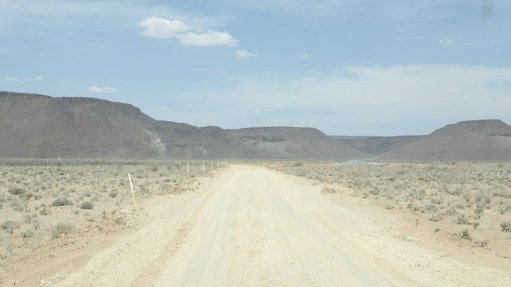
The MeerKAT project is situated about 90 km from Carnarvon with its remote location in an arid area.
South African black-owned construction group Concor has reported on its progress in building the foundations and infrastructure for the MeerKAT extension project, which it is undertaking in conjunction with OptiPower. MeerKAT is South Africa’s world-leading radio telescope array (and also a precursor to the international Square Kilometre Array radio telescope programme), and the extension project involves the erection of 20 more dish antennas.
The MeerKAT site is located in the Karoo region of the Northern Cape province, some 90 km from the town of Carnarvon. The construction company started work on the site in September. In addition to the foundations for the dishes, the project includes the construction of roads and other infrastructure.
“With the piling rig on site, October saw our first piles drilled and concrete poured,” reported Concor contracts manager Stephan Venter. “Soft soil and sandy conditions require that the 20 foundations will be based on piles with a concrete cap; each of these foundations has eight piles of 750 mm diameter and between seven and eleven metres deep.”
The MeerKAT is an extremely precise instrument. Consequently the dishes, including their foundations, have to be positioned with great accuracy. In particular, structures called ‘bolt cages’, to which the dish antenna pedestals are secured, have to be sited with an accuracy measured in fractions of a millimetre. (Each bolt cage is galvanised, with a height of 1.7 m and is constructed locally to specification.)
“In addition to the accuracy, the foundations must ensure that the antennas are able to resist the force of winds, especially as the dish is a wide surface area,” he highlighted. “There is also no room for any vibration of the dish.”
The construction crews must achieve all this while emitting the absolute minimum radio frequency interference (RFI). This is because RFI would not only disrupt the operation of the current MeerKAT array, but could even damage its equipment, which is designed to detect extremely weak radio signals from deep in the universe. RFI can be generated by cell phones, electronics on vehicles and many other pieces of equipment and tools.
“We have tested and modified all our on-site equipment to comply with the RFI limitations,” he assured. “This includes excavators, trucks, graders, compactors, telehandlers, water bowsers, TLBs [tractor-loader-backhoes] and our specialised concrete batching truck.”